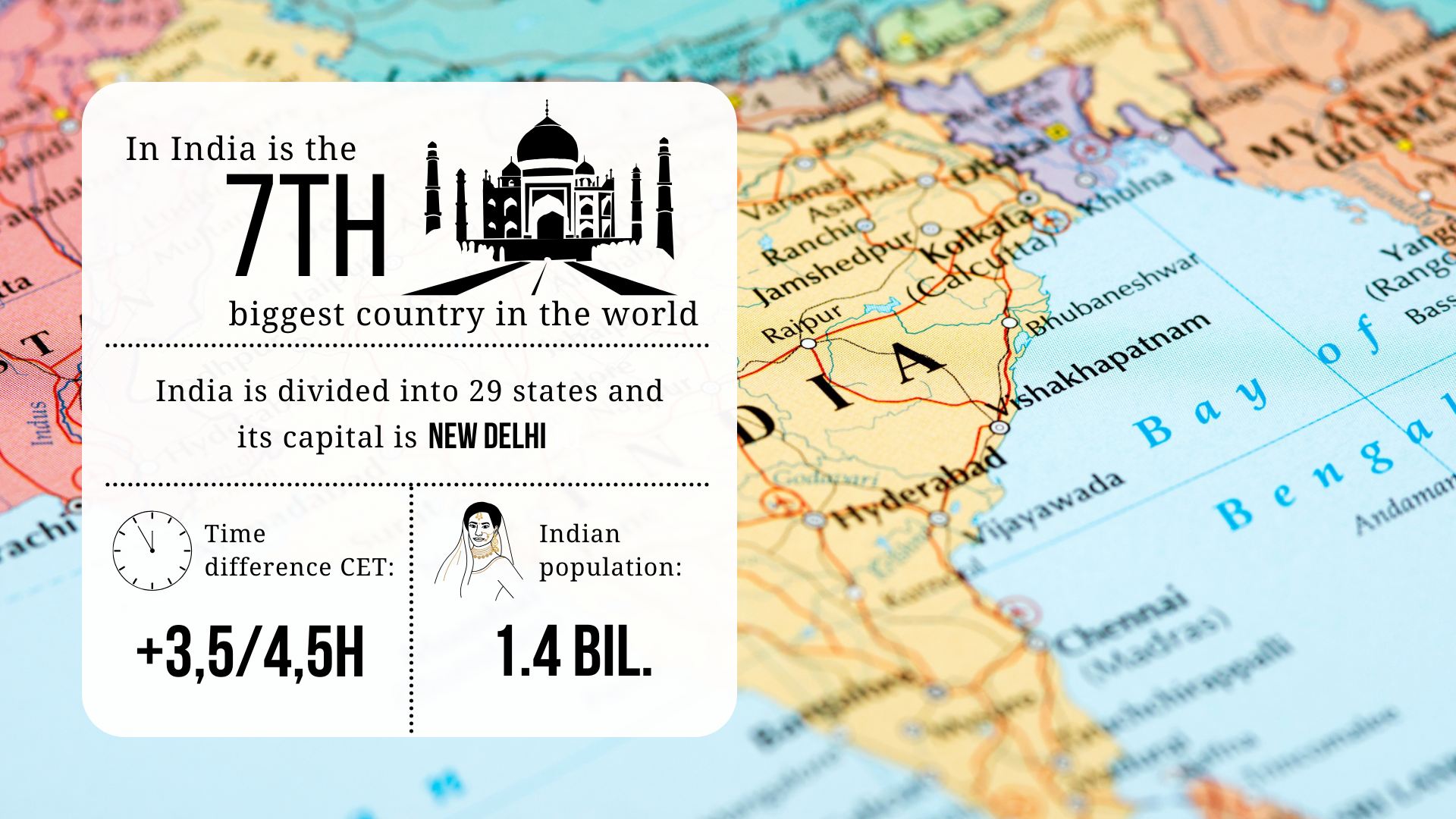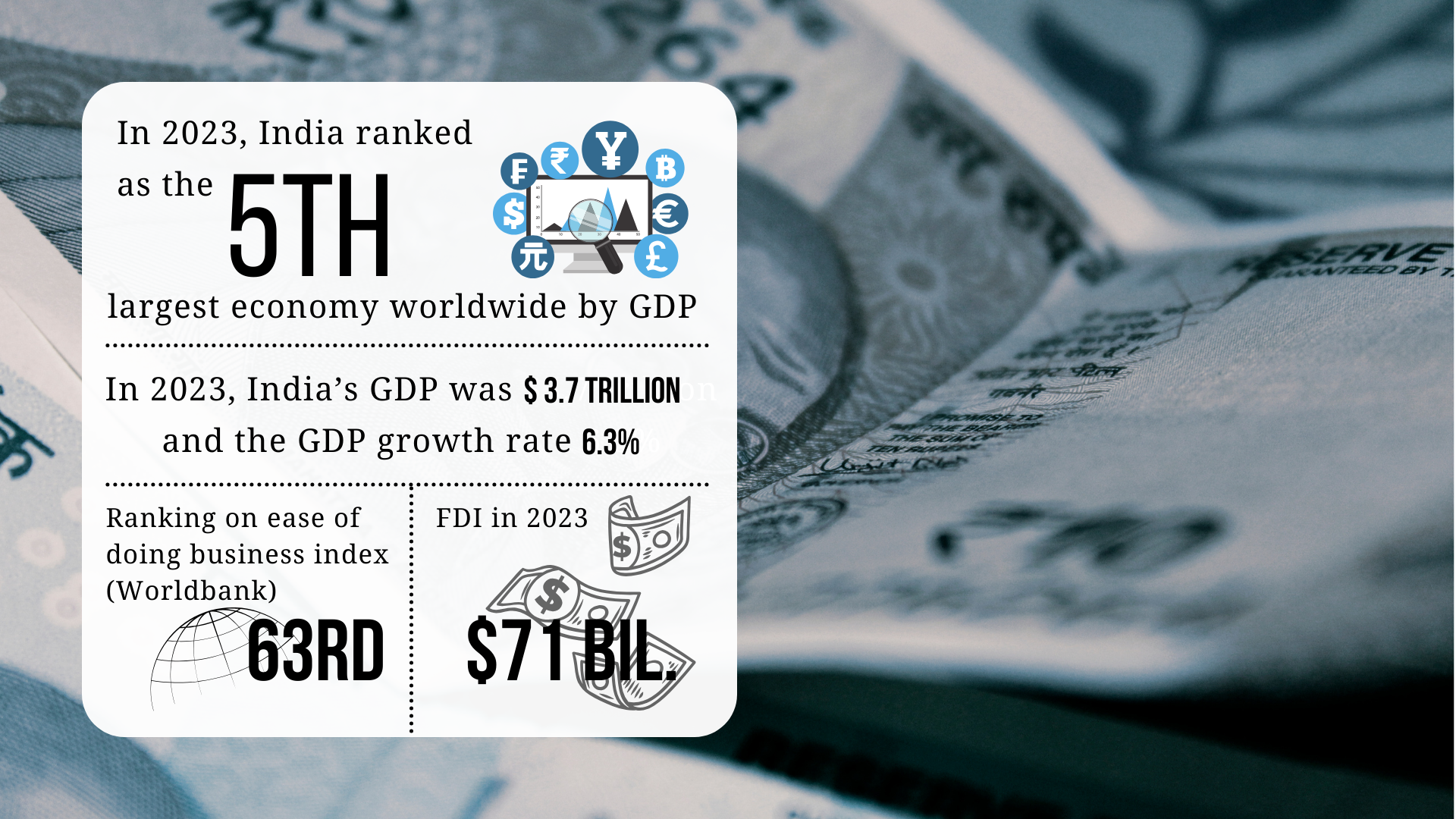India offers interesting opportunities for those looking to tap a new (large!) consumer market, looking for a highly skilled and affordable workforce, or setting up production in a reliable hub with excellent export opportunities in Asia.
Before European companies delve into the business opportunities offered by India, it is also important to have a good understanding of the country, its politics, economy and culture. So that when you take your first steps into the Indian market, you are well prepared. IndiaConnected has therefore listed the most important things you need to know about India.
The Indian economy
In 2022, the Indian economy passed that of the United Kingdom, officially taking the fifth spot among the largest economies worldwide.
India has had consistently high growth rates ranging between 4 and 8 percent year-on-year since the 1980s.
Due to its rapidly growing middle class, India is the third largest economy in the world in terms of purchasing power. In terms of purchasing power parity, India's GDP is estimated to reach $13.1 trillion by 2023.
The sectors that contribute the most to GDP are the service sector and the industrial sector. They account for 53.8 percent and 25.9 percent of GDP, respectively. They are also the country's two fastest-growing sectors, due in part to the country's high level of education and relatively low wages. India's largest sector is still agriculture, which employs nearly 60 percent of India's population. This sector contributes about 20 percent of GDP.
India is one of the favorite destinations for investors worldwide, according to the World Investment Report by the United Nations Conference on Trade and Development (UNCTAD). In the fiscal year 2022-2023, nearly $71 billion in foreign direct investment (FDI) entered the country.
The political system in India
India is a democratic republic with a federal structure. At its head is a president, this is currently Draupadi Murmu. The duties of this president are largely ceremonial. The country's president and vice president are elected every 5 years by a special electoral college.
Executive power lies with the council of ministers (the cabinet), who are led by a prime minister, currently Narendra Modi. The president appoints the prime minister, who is nominated by the ruling political party or coalition. The president then appoints ministers on the advice of the prime minister.
The Parliament of India has two chambers, the upper house called the Rajya Sabha, and the lower house called the Lok Sabha.
Key cultural aspects of India
India is a large and diverse country, better compared to the EU than, say, Germany.
The different Indian states in fact, like European countries, have their own cultural characteristics in terms of religion and language, among others.
Religion
India has six major religions: Hinduism, Islam, Christianity, Sikhism, Buddhism and Jainism. Hinduism is the largest religion in the country; nearly 80 percent of India's population adheres to this religion. Adherence to the other religions is largely concentrated in specific states in the country, for example, concentrations of Muslims are highest in the states of Jammu and Kashmir and Assam, and the number of Sikhs is relatively high in Punjab. In addition to the six major religions, India also has several minor religions, which holidays people get time off from work therefore often varies by individual.
Language
In terms of language, India is also very diverse, with as many as 122 languages spoken in the country. In its constitution, India has recognized and established 22 of these languages as the official languages in the country. The most important of these 22 is Hindi, which is the native language of about 40 percent of India's population and is the official language used by the federal government. English is the second official language of the government and is used by the government mainly in the southern states, where Hindi is neither the official language nor accepted. English is the second most widely spoken language in the country and plays a major role in academic and business contacts in India. Those who travel to India therefore need not worry about communicating with Indians; English is spoken in all states.
Sectors and industrial clusters
The Indian states also differ in terms of climate and available resources, so most states have their own specialties. For example, the southwestern states such as Maharashtra and Karnataka are a suitable base for technical sectors such as automotive, engineering, as well as outsourcing IT and Research & Development teams.
Northern states such as Punjab and Haryana, among others, have thriving agricultural sectors, creating opportunities for food processing and renewable energy industries.
Are you curious about where and what interesting opportunities exist in India for your product or service? In our sector overview, we have listed industry clusters, growth opportunities and other important information for you by major sector.




